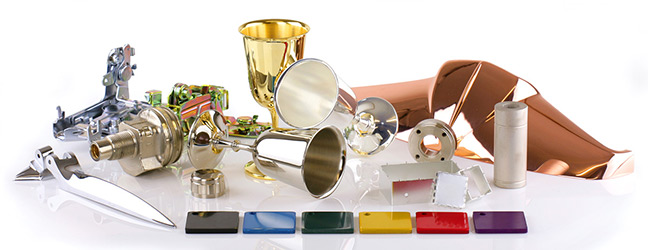What Metal Finishing Options Are There?
Metal finishing is the important final step in the process of preparing metal products before use. Alone, many metals cannot perform long term the way we want them to. Therefore finishing is used in most metal fabrication projects. The process helps add new properties to the metals, such as electrical, chemical, heat, and corrosion resistance. Beyond this, metal finishing also provides improved aesthetics and extra durability. The type of metal finish is dependent on the product’s intended use.
Choosing the right metal finish
There are several factors to consider when choosing a finishing method. The term metal finishing involves more than one process of execution. This essentially means there is more than one way of achieving the desired metal finish. The key points to ask yourself when selecting the right finish include:
- Which finishing process coordinates best with your products intended use?
- Is the metal finishing service suitable for the materials used in your project?
- Can the finishing technique keep up with your production speed demands?
- Is this the most cost-effective solution without compromising on the end product’s quality?
If you are still uncertain, speak to a metal finishing company to gain professional advice.
What types of metal finishing are there?
Electroplating
Also known as metal plating, electroplating is one of the most common metal finishing services available. Electroplating is where a thin layer of metal is coated onto a substrate. This is typically because the original component does not have the properties to perform on its own. As a result, a specific metal coating is applied to improve product performance. The electroplating technique provides a range of benefits that will vary depending on the type of metal coating used. These include improved strength, durability, corrosion resistance, and decorative appeal to name a few.
Galvanizing
Galvanizing refers to metals that have a protective zinc coating. The zinc layer is applied as the product is dipped into a bath of zinc solution. The galvanizing process is best suited to products made of steel. This is because when molten, zinc reacts with steel and binds to form a protective seal. Even if part of the metal becomes damaged, the seal is strong enough to keep the remaining areas protected. Zinc coating is a cost-effective solution that prolongs the life expectancy of steel products.
Powder Coating
Powder-coated metal finishing is most suited for products that need a decorative option. It is twice as thick as paint which is why it is regarded as a more durable solution. The powder is melted and applied to surfaces in various textures and colours. Powder coating is ideal for components that have frequent movement as it yields effortlessly when applied to the material. Products with powder coating tend to chip less but unlike paint they are harder to touch up.
Anodising
Although the process is similar to electroplating, anodising is in fact the opposite. Electroplating can be done on many different metals, whereas anodising is more appropriate for aluminium. Anodising alters the molecular composition of the product’s surface and provides important benefits. These range from reducing wear and tear, improving corrosion resistance, and creating a stronger more robust finish. This metal finishing is colourless, but you can opt to add dyes if you require a visual product appeal.
Dorsetware provide metal finishing in Dorset, Hampshire, and surrounding counties. If you are looking to extend the lifetime of your product with a finishing solution, contact us. We offer a wide range of metal plating solutions suitable for different product types. Our sister company, Hi-Tek, also provide plating masking products. Get in touch with us today by filling out an online contact form on our website. Due to high demand, we will aim to respond within 5 business days.


